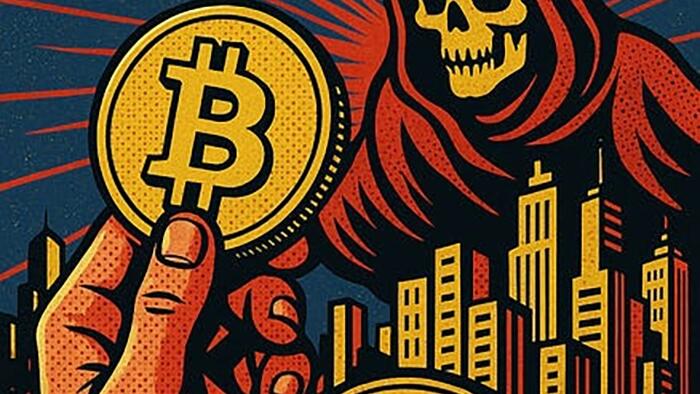Market Pulse
In a significant development for the convergence of traditional finance and blockchain technology, Solana has emerged as the undisputed leader in tokenized stock trading, capturing over 95% of the market volume. This remarkable achievement, highlighted in recent industry reports, underscores Solana’s growing influence beyond its native DeFi and NFT ecosystems and positions it as a key infrastructure provider for the digital asset transformation of traditional securities. The question now for many is not if tokenization will reshape finance, but how Solana managed to dominate this nascent yet highly promising sector.
The Emergence of Tokenized Stocks
Tokenized stocks represent shares of publicly traded companies that are digitized and issued on a blockchain. This innovation promises enhanced liquidity, fractional ownership, 24/7 trading, and streamlined settlement processes, addressing several inefficiencies inherent in legacy financial systems. While the concept has been explored across various blockchain networks, practical implementation and significant volume have historically been fragmented.
Solana’s Unrivaled Market Capture
Recent data indicates that Solana now commands a staggering 95.6% of the total volume in tokenized stock trading. This near-monopoly position is not merely theoretical; it’s backed by substantial transactional activity and, in some cases, significant stablecoin inflows into the Solana ecosystem, which further lubricates trading activity. This dominance signals a critical turning point, demonstrating a clear preference for Solana’s architecture among platforms and users engaged in this specific use case.
- Volume Share: Over 95% of all tokenized stock trading volume now flows through the Solana network.
- Operational Efficiency: High throughput and low latency enable rapid order execution and settlement.
- Cost-Effectiveness: Minimal transaction fees make micro-trades and high-frequency trading economically viable.
Key Technological Advantages Driving Adoption
Solana’s architecture offers several inherent advantages that are particularly well-suited for high-frequency, low-latency financial applications like stock trading. Its unique Proof-of-History (PoH) consensus mechanism, coupled with Proof-of-Stake (PoS), allows for incredibly fast transaction processing and finality, often measured in milliseconds. This speed is critical for arbitrageurs and institutional traders who demand immediate execution and settlement.
- High Throughput: Solana can process tens of thousands of transactions per second (TPS), far exceeding most competing blockchains.
- Near-Instant Finality: Transactions on Solana are confirmed almost instantaneously, crucial for preventing front-running and ensuring trade integrity.
- Low Transaction Costs: Average transaction fees are fractions of a cent, making high-volume trading economical.
- Developer Ecosystem: A rapidly maturing developer toolkit and a growing community of builders contribute to robust application development.
Impact on Traditional Finance and the Future Outlook
Solana’s ascendancy in tokenized stock trading suggests a significant shift in how traditional assets might be managed and traded in the future. Financial institutions are constantly seeking ways to improve efficiency and reduce costs, and Solana presents a compelling solution. While regulatory clarity remains an ongoing challenge for tokenized securities globally, Solana’s proven capability could accelerate institutional adoption once frameworks mature.
This success could also pave the way for other real-world assets (RWAs) to be tokenized on the Solana blockchain, from real estate to commodities. The network’s performance metrics set a high bar for competitors aiming to penetrate this lucrative intersection of TradFi and DeFi.
Conclusion
Solana’s capture of over 95% of the tokenized stock trading market is a watershed moment, affirming its technical prowess and strategic positioning as a leading blockchain for institutional-grade financial applications. This dominance is a testament to its scalable, high-performance architecture, proving that speed and cost-efficiency are paramount for the digitization of traditional securities. As the crypto and traditional finance worlds continue to converge, Solana’s established lead in this critical sector signals its potential to be a foundational layer for the financial systems of tomorrow.
Pros (Bullish Points)
- Solana's proven ability to handle high-frequency, low-latency financial applications could attract more institutional interest and new RWA projects.
- This market dominance solidifies Solana's position as a critical infrastructure provider, enhancing its long-term value proposition and ecosystem growth.
Cons (Bearish Points)
- Regulatory uncertainty surrounding tokenized securities could still pose headwinds, regardless of Solana's technical capabilities.
- Competition from other high-throughput blockchains or traditional financial incumbents could intensify as the market matures.
Frequently Asked Questions
What are tokenized stocks?
Tokenized stocks are digital representations of traditional company shares, issued and traded on a blockchain, offering benefits like fractional ownership, 24/7 trading, and faster settlement.
Why is Solana dominating this market?
Solana's dominance is attributed to its high transaction throughput (TPS), near-instant transaction finality, and extremely low transaction fees, which are crucial for efficient stock trading.
What are the implications for traditional finance?
Solana's success in tokenized stocks demonstrates blockchain's potential to significantly improve the efficiency, accessibility, and cost-effectiveness of traditional financial markets, potentially paving the way for broader institutional adoption of digital assets.



